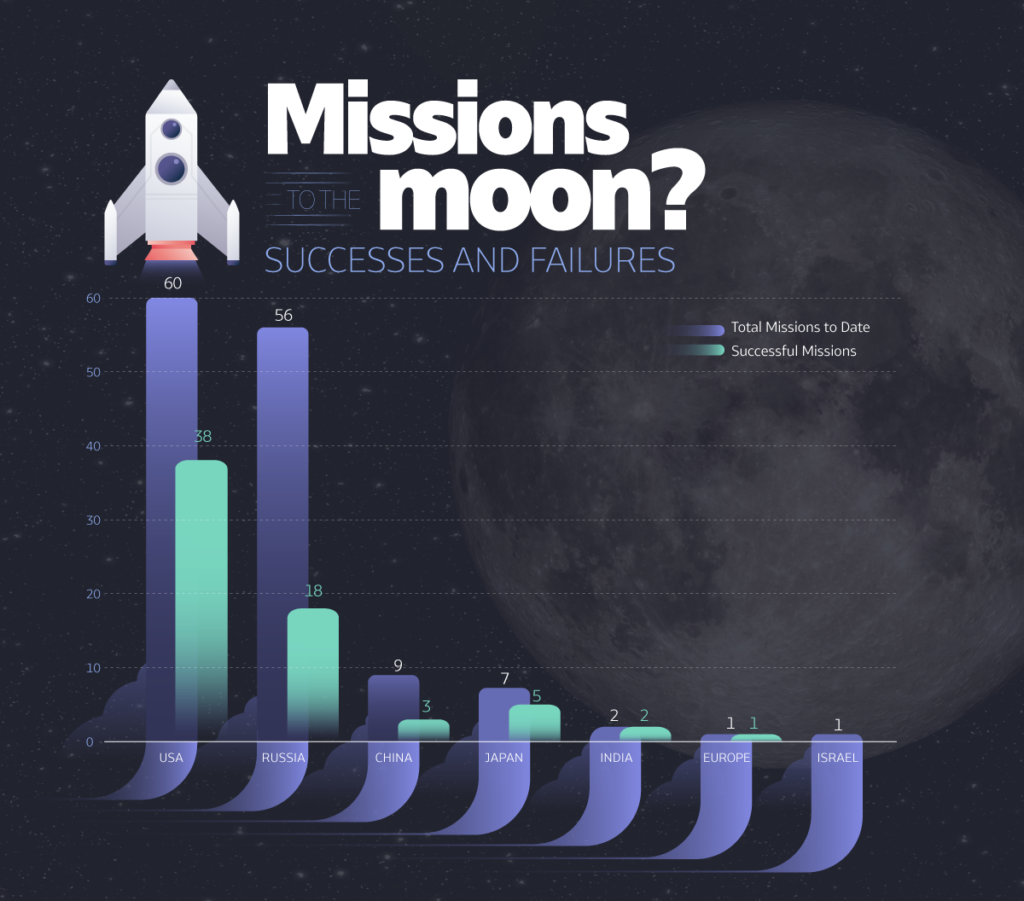Fifty years ago, Neil Armstrong was the first to set foot on the moon and bring sci-fi fabrication to an end. His one infamous words, ‘’ one small step for man, one giant leap for mankind” now spread like fire all over the world, to approximately 530 million spectators.
The world will experience the celebration of this day again in a few weeks’ time, thanks to half a century of space reconnaissance and augmentation.
In honor of this revolutionary accomplishment, we peek into the history of lunar landings and analyze the future of space exploration and the niche of private companies in the thriving space economy.
Which countries have undergone lunar landing?
The most famous mission is Apollo 11, but other successful yet emasculated ones include the Soviet Union’s Luna 2 in 1959 and the Luna 9’s soft-landing in 1966.
NASA’s Surveyor 1 also soft-landed quite flourishingly four months later, as well as four more such missions.
After a 14-year stressful space race between the Soviet Union and the United States, Apollo 11 triumphantly went to and back from the moon, setting an example for generations to come.
After this, NASA sent 6 more missions to the moon, 5 of them being fruitful. 37 years after Luna24, China also soft-landed successfully on the moon in December 2013.
The US sent the most missions to the moon, 38 of them were got successful followed by the former Soviet Union, had 56 missions on its credit.
Future missions to the moon
The present US administration has zealous schemes for getting human beings onto the moon by the year 2024, four years earlier than the initial agenda. The program is called Artemis and it includes 8 launches and a mini station around the moon by 2024.
On the contrary, Russia plans on sending barricaded flights to the moon beginning in 2025 and setting up a lunar colony by 2040 and a pre moon- war has already set between the former space rivals.
India is struggling to be the fourth one to soft-land on the moon and successfully launched its second mission to the moon, Candrayan 2 and scheduled launching of another mission somewhere in September.
The space race saga doesn’t just end with the dominating world powers. Private companies are in at the game as well, like Space X, which also wish to meet the goal of traveling to Mars. Elon Musk’s Space X looks forward to sending a group of artists around the moon in 2023, while Jeff Bezo’s Blue Origin hopes to make it by 2024.
Is Privatised Space Travel the Future?
Since these ardent space probing missions are extremely pricey, NASA is increasingly hoping for private companies to chip in. Elon Musk, Jeff Bezos and Paul Allen are some of the billionaires devoting generously in the economic space stratum.
There are more than a hundred space transport companies worldwide at the moment, according to SpaceFund’s launch database. A bulk of them are based in the US, followed by the UK, then China.
It is the assumption of many that private-public partnerships between NASA and private companies like SpaceX, Blue Origin and Virgin Galactic are the future of spacecraft. As a matter of fact, commercial launch traffic into low-earth orbit has experienced a steep rise over the past 10 years.
Your Turn
What are your thoughts concerning the future of space travel? Will a rise in the exploration of space be beneficial in the distant future? Or will it divert us from more serious problems to be addressed here on the Earth? Please share your thoughts and views concerning these issues.

Aniqa Mazhar is a graduate of QAU in Biochemistry. She has taught sciences to O levels and is currently planning for her MS in Food Technology. Aniqa’s hobbies are reading, watching movies, writing, calligraphy, long walks, and nature photography.





